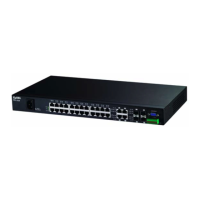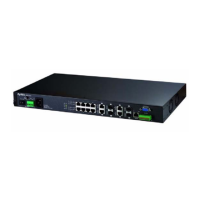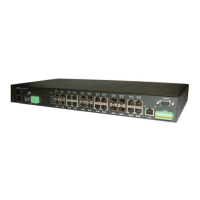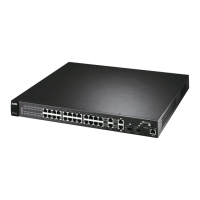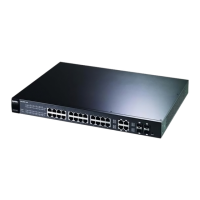Chapter 30 profile Commands
Management Switch Card User’s Guide
862
set <profile> <sip-dn> <regsvr-
ip>|<regsvr-dn> <proxysvr-
ip>|<proxysvr-dn> [sipport
<sip-port>]
[regsvrport <regsvr-port>]
[proxysvrport <proxysvr-
port>] [dscp <dscp>]
[keepalive off|on <se>]
[switchtype <switchtype>]
[rtpport <start-rtp-port>
<end-rtp-port>]
Configures the specified SIP profile. The system
supports up to 128 SIP profiles.
sip-dn: The SIP server’s domain name
(maximum 63 characters).
regsvr-ip: SIP registrar server’s IP address.
regsvr-dn: registrar server’s domain name, up to
63 characters.
sip-port: SIP UA port number (1025 ~ 65535).
regsvr-port: SIP registrar server’s port number
(1025 ~ 65535).
proxysvr-ip: SIP proxy server’s IP address.
proxsvr-port: SIP proxy server’s port number
(1025 ~ 65535).
dscp: DSCP for RTP, SIP packets (0 ~63).
keepalive: Enable (on) or disable (off) the SIP
session keepalive. When enabled, the SIP UA
periodically sends SIP session refresh requests.
se: The minimum session expiration time (90 ~
65535 seconds).
switchtype: Select the switch type for the NGN
server:
1: Call transfer
2: Inquiry call
3: Broker call
4: Waiting call
5: Conference call
rtpport: Set a range of RTP (Real time Transport
Protocol) ports to use for voice data transfer.
start-rtp-port: Start of RTP port number,
should be even, 4000~64000.
end-rtp-port: End of RTP port number, should
be even, 5000~65535.
8
show [<profile>]
Displays the current settings of the specified
profile, or displays the names of all profiles if
none is specified.
1
dialplan
delete
<profile>
Removes the specified dial plan profile. 8
dialplan
map
<profile>
Displays subscribers referenced by all dial
plan profiles or by the specified one.
1
dialplan
set
<profile> <index>
[<dialplan-table>]
Configure dial plan related settings of the
specified profile.
<index>: The index number for an entry in
the dial plan table (1~32).
<dialplan-table>: The dialplan table
name (<=31 characters). Use the voip
dialplan set command to set up a
dialplan.
8
Table 366 profile Commands (continued)
COMMAND DESCRIPTION P
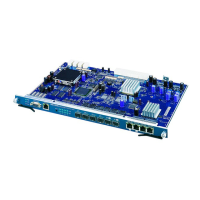
